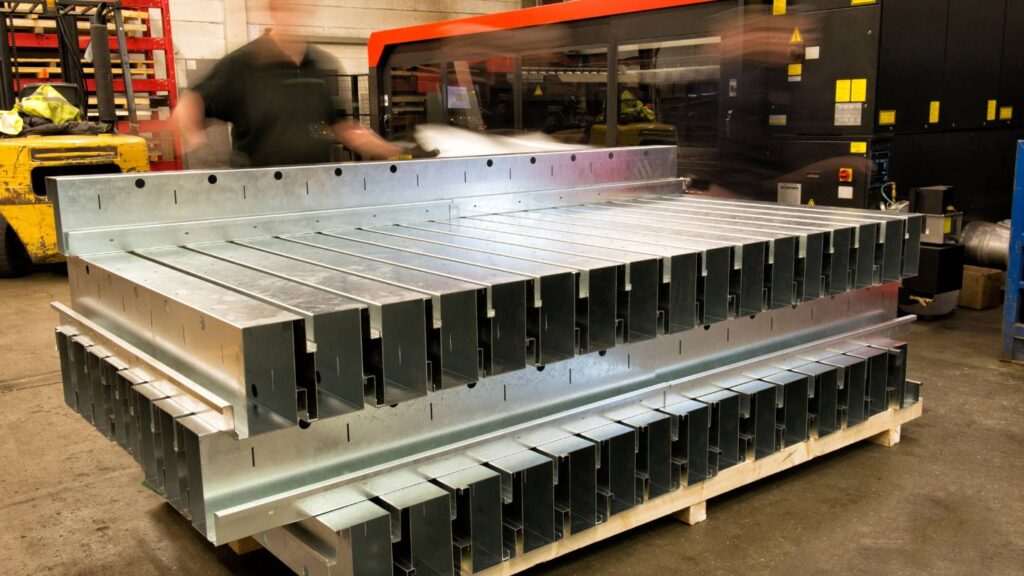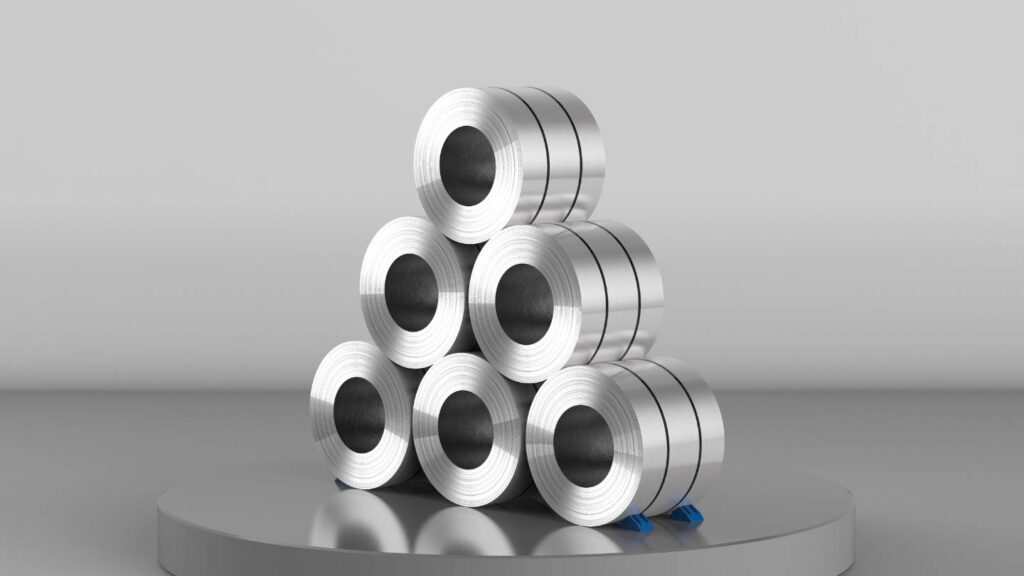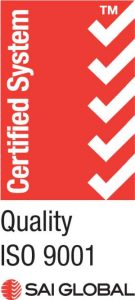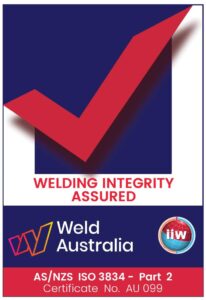There are a number of variables that affect the final price tag of an aluminium fabrication, including the complexity of the process, the cost of materials, and any other relevant elements. The intricacy of the fabrication job is a major component influencing the cost.
Fabrication costs tend to rise when dealing with complex designs, fine details, or customisations because these things typically necessitate specialised equipment, more labour hours, and experience. The fabrication costs of simpler designs or standardised products tend to be lower.
The total cost of fabricating aluminium is heavily dependent on material costs. Aluminium costs are greatly affected by the type, quality, and amount of aluminium utilised. The price of aluminium materials might vary depending on their grade and whether they are specialised alloys or regular aluminium. Aluminium sheets or profiles used for the fabrication project can vary in size and thickness, which in turn affects material costs.
The total cost is also affected by the fabrication techniques used and any extra finishing procedures. Surface treatments, extrusion, welding, and machining are some of the processes that might impact production costs because to the specialised equipment, knowledge, and materials needed for these operations. The overall cost is increased by adding on post-fabrication treatments like as painting, anodising, or coating to improve the look or functioning.
Table of Contents
What is Aluminum Fabrication?
Any procedure that takes aluminium and shapes it into a desired form is considered an aluminium manufacturing process. Different physical qualities can be imparted to aluminium through a broad variety of physical and chemical processes.
There is a wide variety of aluminium fabrication techniques. That is why there is a wide range of processes in terms of the physical characteristics of the finished products. So, it's important to know how different manufacturing methods differ, because some of those distinctions will determine which approach is best.
To illustrate the point, certain components necessitate a certain manufacturing process in order to achieve the required properties, such as shape or strength. Another possibility is that a part can be successfully manufactured using two techniques, but the surface finish produced by one of them is subpar. When choosing a procedure, it's vital to consider not just the benefits, but also the cost and production rate.

How Much Does Custom Metal Fabrication Cost
There is more to figuring out the total cost of bespoke metal fabrication than just adding up the price of materials and labour. Although we will discuss those factors in this article, there are many more that contribute to the RFQ process and the accuracy of quotations.
The reasons for the varying costs of metal fabrication and finishing projects can be better understood if you are familiar with the elements that are considered while providing quotes. Most importantly, we will go over the following components of a bespoke metal fabrication quote:
Materials
In order to have a good idea of how much custom metal fabrication will cost, you need to know what kinds of raw materials are required for your project. Some examples of such materials are carbon steel, aluminium, stainless steel, and different alloys. The thickness of the metal can affect the material prices as well as the labour required to produce it.
There can be more economical material choices than the ones you've specified; therefore, it's important to engage with the metal fabricator to discover all of the materials that could be suitable for your project. As the pandemic demonstrated, disruptions to supply chains can cause raw material prices to fluctuate; your fabricator should be able to shed light on these markets.
Think about all the hardware and accessories that will be required to be set up with the design in addition to the raw materials. Customers often supply certain accessories, or they may ask the fabricator to get them for them. A number of components must be considered when calculating the final price, such as hydraulic parts, gaskets, latches, hinges, EMI shielding, etc.
The quantity of both raw materials and completed goods will also have an impact on the final cost. The general trend is that the average cost per item decreases with increasing order numbers. Machine setup times and the labour required to operate them are both decreased as the quantity increases.
Labor
Expertise in both shop and office procedures is essential for custom metal fabrication. An important component of any metal fabrication project is the labour cost, which includes design or structural engineers with expertise in CAD/CAM software, as well as professional estimators, inspectors, trained welders, and assembly workers. A fabricator's ability to save costs is directly proportional to how nimble and simplified their procedures are.
There is mechanical labour as well as human labour. Metal fabricators typically include in some of the significant capital expenditures associated with specialised equipment and tooling into each project budget. An estimate must take into consideration the greater machine time required for certain materials.
Project Complexity
The complexity of a project is directly related to the cost of labour. Although there is a lot of leeway in the configuration of metal sheeting and welding, the general rule is that parts will be less expensive if there are fewer cuts, bends, and welds. Also, don't forget to include in the price for prototypes or speciality machining if they're needed. Time is money, and manufacturing times will increase if complex designs or exceptionally tight tolerances are involved.
The rule of thumb is that the more involved something is, the more it will cost. When a project enters the production floor, what appears to be feasible on paper might not be the case at all. In order to guarantee that a plan can be manufactured according to requirements and will be structurally sound when finished, it is crucial to review it using a design for manufacturability (DfM) approach.
Certifications & Compliance Requirements
Numerous inspections, tests, and audits are necessary for defence projects due to the stringent compliance issues. Certification to standards such as ISO 9001 or AS, AWS, DFAR, NAVSEA, MIL SPEC, or others may be necessary. It is common for various pieces of paperwork to be required, such as material certifications, material traceability, weld mapping, Certificate of Conformance, and First Article Inspections.
Metal fabrication shops often have third-party inspectors or government source inspectors come in to check for requirements compliance. Extra time is needed for completion due to the fact that the customer or other third party services want qualified and licenced welding techniques.
A project's budget will grow in response to these supplementary certifications and processes. Commercial contracts may occasionally necessitate comparable paperwork, however they are more frequently associated with defence contracts. Knowing that a metal fabrication firm possesses these capabilities gives you piece of mind. It shows that they have established processes and procedures and that their workers are highly qualified and trained to offer great quality.
Painting and Finishing
Are you planning to paint or apply a particular finish to your fabrication project? There will be corresponding expenses for the various finishes and standards, including chem-film, electroless nickel, anodising, zinc, and various paint and powder coating options. Additionally, when applying a finish, there are design issues that must be taken into mind. Coating procedures, like fabrication, could be costly and require certification.
Noting the necessary finishing is also crucial. If you only say "black paint," for instance, the estimators won't be able to give you an exact quote. Particulars like the product number and specifics (such as the coating type, pretreatment requirements, and permitted suppliers) are required.
Delivery Methods
If shipping costs are not included in the initial quote or budget, they can end up being an unexpected last-minute charge. An apparent factor in the cost of metal manufacturing is the distance that pieces need to travel. Not all businesses use dedicated transportation companies to collect products; some use FOB destination freight, which shifts the responsibility for shipping costs to the fabricator, who in turn passes them on to the client.
In order to ensure the safe transportation of huge and complicated fabrications, special packaging must be developed, constructed, and engineered. To assist cut down on packaging expenses for future orders, think about whether you may return these specialised shipping materials to the fabricator to use on other projects.
What are the benefits of custom metal fabrication services?
If your company is interested in producing metal goods, investing in custom fabrication services might be a wise choice. Some people choose mass-produced parts because they are inexpensive, while others reject personalised services because of the larger investments. Custom metal fabrication services may be more expensive, but the advantages are well worth it. Keep reading if you want to know how this service makes money-making benefits.
Durable end products
While prefabricated metal parts are more budget-friendly, they don't last as long as custom-made ones. The use of higher-quality materials and methods made possible by custom work frequently increases a product's lifetime. Also, unlike prefabricated parts, parts made to order are specifically tailored to your product's needs, making them superior in quality.
The alloys used to make sheet metals for bespoke metal components are carefully selected to ensure they will withstand the extremes of heat, pressure, and mechanical that your product will eventually encounter in its final application. Consequently, these services usually end up paying for themselves due to the increased durability of the parts produced. You can lower your product's total cost by decreasing the frequency of part replacement.
Adaptable solutions fit for specifications
Using mass-produced metal items for specific purposes is commonplace for several businesses. Electronic device housings, hard drive inclosures, and similar devices are a few examples. Having said that, there are a number of scenarios in which companies might benefit from hardware with a more tailored design.
Parts that are compatible with the hardware your company employs can also be made by custom fabricators. Compatibility isn't necessarily guaranteed when dealing with prefabricated metal components. These components might function, but they aren't ideal for what they're meant to do. Adaptable solutions that better meet the work criteria can be achieved with custom metal fabrication. Because of this, you'll be able to meet the demands of a wider range of customers.
Convenience in service
Offering a practical answer for your company is a primary goal of our bespoke metal fabrication services. Using this service, you may effortlessly decide on every step of manufacturing, from the initial concept to the final result.
You can provide specifications down to the smallest detail since this service lets you customise various aspects of the production process. Because of this level of detail, fabrication services can enhance product production and flow. The end result is that they can get the most out of every machine in the production lineup and maximise per load capacity.
The use of state-of-the-art bespoke metal fabrication processes and technology ensures that your item is built to perform according to your specifications. Using this service will also result in a high-quality end product, which may boost consumer happiness and ultimately your company's ROI.
Access to skills and advanced methods
An very niche market exists for custom metal fabrication. For this reason, fabricators who want to maintain a high standard of service must monitor developments in the industry closely. The quality of fabrication services is further enhanced by the fact that only the most qualified workers, engineers, and designers are employed by these businesses.
So, you can relax knowing that skilled individuals are creating your metal components. Their knowledge and experience will guarantee that they employ top-notch techniques to manufacture components of your product.
On top of that, their engineers can offer you further insight into your metal project thanks to their extensive background in the field. They will definitely be able to help you out if you ask them for it because they have the necessary expertise. You can also ask them for advice if you're not sure what to do with your design.
Availability of a diverse array of high-quality tools
Having access to high-quality machinery is another perk of using a custom metal fabrication business, just like having a trained team. If you're looking for a custom fabricator, make sure they have the equipment to handle even the most intricate part designs.
In addition, as a bespoke metal fabrication company offers a highly customisable service, they need to be capable of meeting all of your product specifications. Therefore, custom services have a complete set of tools for a wide variety of operations, including cutting, punching, bending, and more. They go so far as to deburr and apply finishes as secondary finishing procedures. The production process becomes more efficient and cost-effective when all of these duties are handled by the same service provider.

Reduces costs for metal materials
By partnering with a bespoke metal fabrication firm, you may cut down on material overhead costs as well. A reliable fabrication shop can get their hands on cheaper, higher-quality metals in bulk. This is because they have established ties with metal mills, which enables them to supply themselves with high-quality components at affordable pricing.
In turn, this lets you save a tonne of money on raw material purchases. The metals that work well with your design are something that custom fabricators can also tell you. Eliminating the need to alter your product or spend money on wasted materials is a huge boon to your bottom line, and this perk is priceless.
Conclusion
The intricacy of the process, the cost of materials, and other pertinent elements all contribute to the overall cost of aluminium manufacturing. Because of the increased need for specialised equipment, additional labour hours, and expertise, the cost of aluminium fabrication goes up when working with intricate designs, fine details, or customisations.
The amount, quality, and kind of aluminium utilised all have an impact on the material costs, which in turn determine the overall cost of producing aluminium. Surface treatments, extrusion, welding, and machining are additional finishing methods that can increase manufacturing costs, in addition to the fabrication techniques utilised. The total cost is further increased by post-fabrication treatments like as painting, anodising, or coating.
Several elements impact the final price tag of a custom metal fabrication, such as the amount of materials and finished products needed, the fabricator's level of competence, and the amount of manual and automated labour involved. The fabricator's capacity to save costs is closely correlated with the efficiency of their methods, and the average cost per item drops as the order numbers increase.
Ultimately, the intricacy of the process, the cost of materials, and the overall complexity of the fabrication all play a role in determining the final cost of aluminium manufacturing. The best way to tackle your project's budget is to have a good grasp of these aspects.
A project's labour cost is proportional to its complexity; longer production durations are associated with more intricate designs or strict tolerances. Reviewing a project using a design for manufacturability (DFM) methodology is vital to ensure it is structurally sound and built according to standards.
There are a variety of finishes and standards that come with painting and finishing charges, and design considerations are also important. To guarantee the secure transfer of huge and intricate fabrications, specialised packaging needs to be designed and manufactured.
Businesses looking to manufacture metal products may do well to consider custom metal fabrication services. Although prefabricated metal parts are less expensive, custom-made ones are often of superior quality and will endure longer because of this. Bespoke metal components' greater longevity and decreased part replacement costs are the consequence of the alloys' careful selection to endure high temperatures, high pressures, and mechanical stresses.
Flexible solutions, easy service, expert labour, cutting-edge technologies, and a wide variety of high-quality tools are just a few of the many advantages that firms may reap from custom metal fabrication. Businesses may maximise per-load capacity and guarantee hardware compatibility with a more customised design when they collaborate with a bespoke metal fabrication company. The use of cutting-edge methods and tools by custom fabricators guarantees top-notch final products, which in turn increases customer happiness and return on investment.
Fabricators are in a specialised field where keeping up with the latest trends is essential for providing excellent service. For their projects, they only bring in the best engineers, designers, and workers, so you know you're getting top-notch techniques and advice. A full suite of tools for different operations is available to bespoke fabrication enterprises, which further streamlines and reduces the cost of production.
Companies can cut down on material overhead expenses by teaming up with bespoke metal fabrication firms. This is because these firms can procure metals in bulk from metal mills at lower prices without sacrificing quality. The bottom line benefits because it prevents spending money on wasting materials or altering items.
Content Summary
- The final price of aluminium fabrication is influenced by factors such as complexity, material costs, and relevant elements.
- Fabrication costs rise with complex designs, fine details, and customisations, requiring specialised equipment and more labour hours.
- Simpler designs or standardised products generally result in lower fabrication costs.
- Material costs, affected by the type, quality, and amount of aluminium used, heavily impact the total cost of fabricating aluminium.
- Aluminium sheets or profiles with varying sizes and thicknesses contribute to variations in material costs.
- Fabrication techniques like surface treatments, extrusion, welding, and machining impact production costs due to specialised equipment and materials.
- Post-fabrication treatments like painting, anodising, or coating can increase the overall cost to improve appearance or functionality.
- The total cost includes shipping, transportation, handling fees, and any special instructions or modifications requested by the customer.
- The combination of material prices, process intricacy, fabrication methods, and additional services defines the overall aluminium fabrication cost.
- Any procedure shaping aluminium into a desired form is considered an aluminium manufacturing process.
- Various physical and chemical processes can impart different qualities to aluminium during fabrication.
- Different fabrication techniques lead to a wide range of finished product characteristics, influencing the choice of manufacturing methods.
- The selection of manufacturing processes depends on the desired properties, shape, or strength required for specific components.
- Custom metal fabrication costs involve more than materials and labour, considering various factors contributing to the RFQ process.
- Raw materials, including carbon steel, aluminium, stainless steel, and alloys, impact the cost of custom metal fabrication.
- Material thickness affects both material prices and labour required for fabrication.
- Additional accessories, such as hydraulic parts, gaskets, latches, hinges, and EMI shielding, contribute to the final price.
- Order quantity affects the average cost per item, decreasing with larger orders due to reduced setup times and labour requirements.
- Labour costs in custom metal fabrication encompass expertise in design, structural engineering, CAD/CAM software, welding, and assembly.
- Efficiency in labour costs is related to simplified procedures and nimble operations in custom metal fabrication.
- Project complexity directly influences labour costs, with fewer cuts, bends, and welds typically resulting in lower costs.
- Prototypes or specialty machining can incur additional costs, and manufacturing times increase with complex designs or tight tolerances.
- Certifications and compliance requirements for defence projects can impact a project's budget, involving inspections, tests, and audits.
- Painting and finishing costs depend on the chosen finishes, including chem-film, electroless nickel, anodising, zinc, and various paint and powder coating options.
- Design considerations must be taken into account when applying finishes, as coating procedures can be costly and require certification.
- Shipping costs, if not included in the initial quote, can be an unexpected last-minute charge, influenced by the distance pieces need to travel.
- Specialised packaging is needed for the safe transportation of large and complex fabrications, adding to packaging expenses.
- Custom metal fabrication offers durable end products with higher-quality materials and methods, increasing product lifespan.
- Custom-made parts are tailored to specific needs, enhancing quality and lowering the frequency of part replacement.
- Adaptable solutions cater to specific hardware requirements, ensuring compatibility and meeting a broader range of customer demands.
- Custom metal fabrication services provide convenience in decision-making throughout the manufacturing process, from concept to final result.
- Customisation options allow detailed specifications, enhancing product production and flow.
- State-of-the-art fabrication processes and technology ensure high-quality end products, boosting consumer satisfaction and return on investment.
- Custom fabricators employ skilled individuals, including engineers and designers, to ensure top-notch techniques in component manufacturing.
- Access to a diverse array of high-quality tools enhances the efficiency and cost-effectiveness of the production process in custom metal fabrication.
- Custom metal fabrication reduces costs for metal materials by accessing cheaper, higher-quality metals in bulk through established ties with metal mills.
- Established ties with metal mills enable custom fabricators to supply themselves with high-quality components at affordable pricing.
- Custom metal fabrication eliminates the need to alter products or spend money on wasted materials, contributing to cost savings.
- The advantages of custom metal fabrication services, including durability, adaptability, convenience, and access to skills, outweigh the initial higher costs.
- Custom metal fabrication services contribute to a longer product lifespan through the use of higher-quality materials and methods.
- Compatibility with specific hardware requirements allows for the creation of adaptable solutions, meeting a broader range of customer needs.
- The customisation options in fabrication services provide convenience in decision-making, enhancing product production and flow.
- Access to skilled individuals and advanced methods in custom fabrication ensures top-notch techniques for manufacturing metal components.
- The diversity of high-quality tools in custom metal fabrication contributes to efficiency and cost-effectiveness in the production process.
- Custom metal fabrication reduces costs for raw materials through access to cheaper, higher-quality metals in bulk.
- Eliminating the need to alter products or waste materials results in substantial cost savings for businesses.
- The overall benefits of custom metal fabrication, including durability, adaptability, convenience, and cost savings, make it a wise investment for companies.
- Custom metal fabrication services provide practical solutions, offering flexibility and tailored production to meet specific project requirements.
- The use of advanced technology and skilled professionals in custom metal fabrication ensures a high-quality end product, ultimately enhancing consumer satisfaction and the return on investment.
Frequently Asked Questions
The strength of aluminum fabricated parts is influenced by the choice of alloy, tempering processes, and fabrication techniques employed. Alloy composition and heat treatments significantly impact the final strength.
Yes, aluminum components can undergo secondary machining processes such as milling, drilling, or turning to achieve specific dimensional accuracy or intricate features not achieved during primary fabrication.
Choosing appropriate cutting tools, coatings, and geometries is crucial in aluminum machining. Tools designed for aluminum reduce cutting forces, prevent chip buildup, and prolong tool life.
Proper handling and storage prevent contamination and preserve the integrity of aluminum materials. Avoiding exposure to moisture, acids, or alkalis helps maintain material quality before fabrication.
Aluminum fabrication's recyclability, energy efficiency in production, and lightweight properties contribute to sustainable manufacturing practices, reducing environmental impact compared to other materials.

